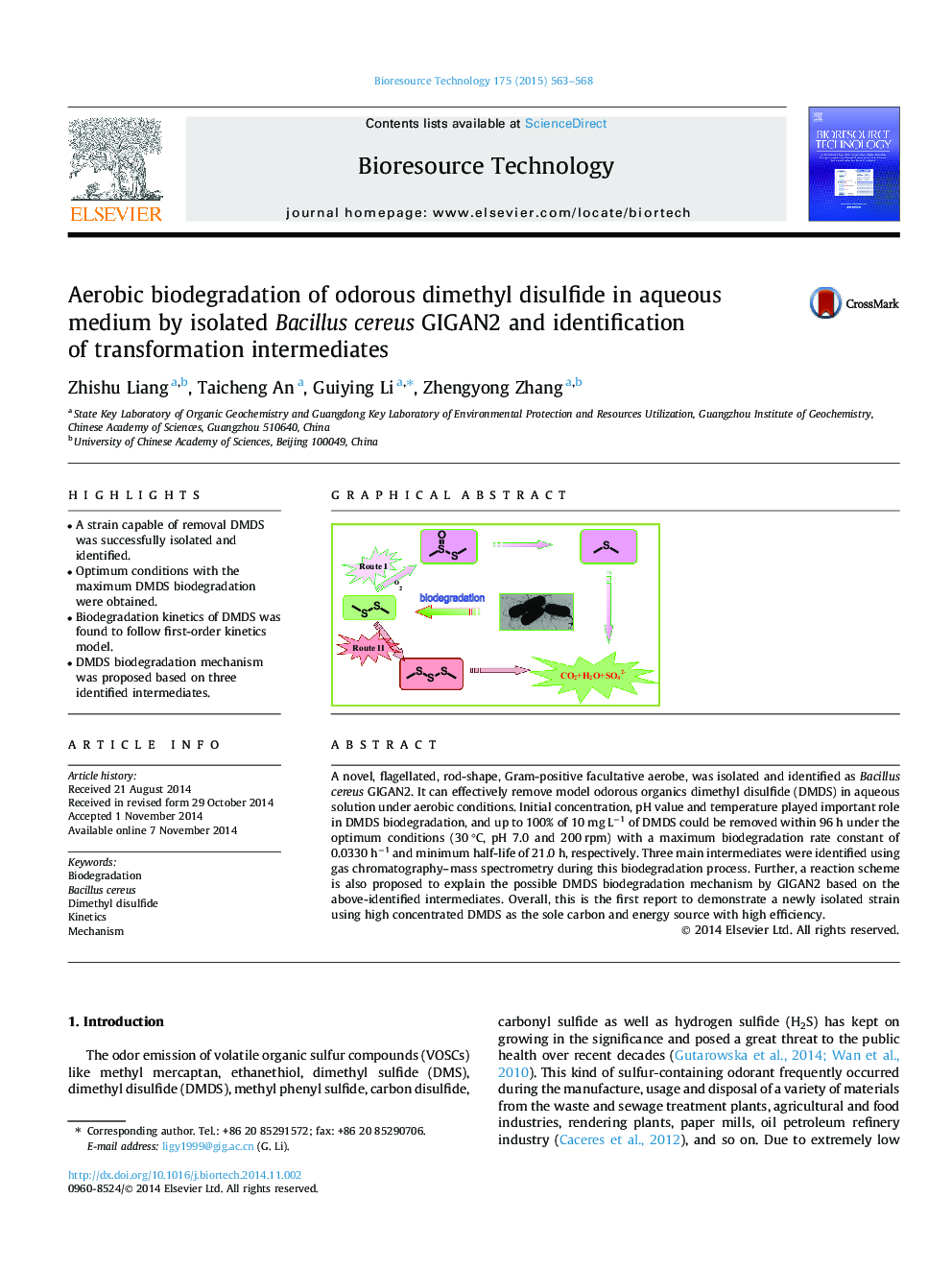| Article ID | Journal | Published Year | Pages | File Type |
|---|---|---|---|---|
| 680283 | Bioresource Technology | 2015 | 6 Pages |
•A strain capable of removal DMDS was successfully isolated and identified.•Optimum conditions with the maximum DMDS biodegradation were obtained.•Biodegradation kinetics of DMDS was found to follow first-order kinetics model.•DMDS biodegradation mechanism was proposed based on three identified intermediates.
A novel, flagellated, rod-shape, Gram-positive facultative aerobe, was isolated and identified as Bacillus cereus GIGAN2. It can effectively remove model odorous organics dimethyl disulfide (DMDS) in aqueous solution under aerobic conditions. Initial concentration, pH value and temperature played important role in DMDS biodegradation, and up to 100% of 10 mg L−1 of DMDS could be removed within 96 h under the optimum conditions (30 °C, pH 7.0 and 200 rpm) with a maximum biodegradation rate constant of 0.0330 h−1 and minimum half-life of 21.0 h, respectively. Three main intermediates were identified using gas chromatography–mass spectrometry during this biodegradation process. Further, a reaction scheme is also proposed to explain the possible DMDS biodegradation mechanism by GIGAN2 based on the above-identified intermediates. Overall, this is the first report to demonstrate a newly isolated strain using high concentrated DMDS as the sole carbon and energy source with high efficiency.
Graphical abstractFigure optionsDownload full-size imageDownload as PowerPoint slide
